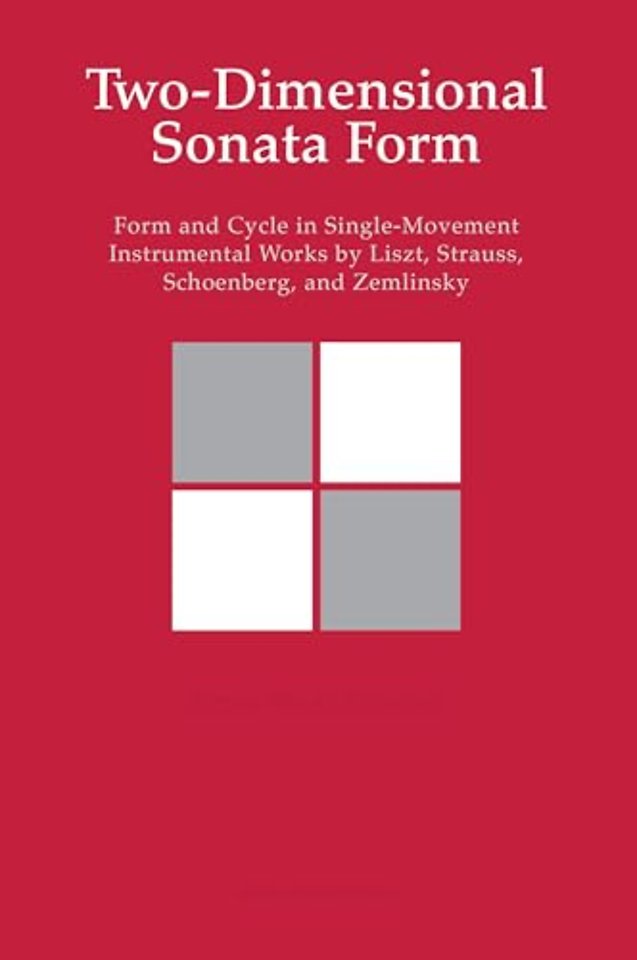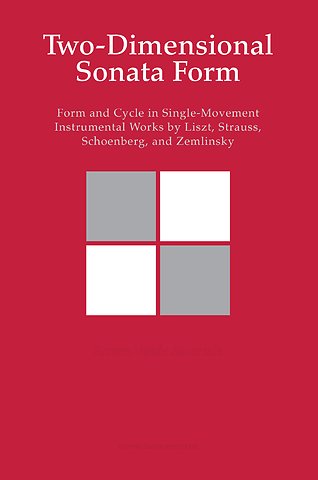Two-Dimensional Sonata Form
Form and Cycle in Single-Movement Instrumental Works by Liszt, Strauss, Schoenberg and Zemlinsky
Samenvatting
Two-Dimensional Sonata Form is the first book dedicated to the combination of the movements of a multimovement sonata cycle with an overarching single-movement form that is itself organized as a sonata form. Drawing on a variety of historical and recent approaches to musical form (e.g., Marxian and Schoenbergian Formenlehre, Caplin’s theory of formal functions, and Hepokoski and Darcy’s Sonata Theory), it begins by developing an original theoretical framework for the analysis of this type of form that is so characteristic of the later nineteenth and early twentieth century. It then offers an in-depth examination of nine exemplary works by four Central European composers: the Piano Sonata in B minor and the symphonic poems Tasso and Die Ideale by Franz Liszt, Richard Strauss’s tone poems Don Juan and Ein Heldenleben, the symphonic poem Pelleas und Melisande, the First String Quartet and the First Chamber Symphony by Arnold Schoenberg, and Alexander Zemlinsky’s Second String Quartet.
Specificaties
Inhoudsopgave
Introduction
Chapter 1 Two‑Dimensional Sonata Form: A terminological and conceptual framework
Levels of form
Analogies between levels
Projection of hierarchies
Identification, interpolation, and exocyclic units
Integration, process, and tension
Further terminological considerations
Notes
Chapter 2 L iszt’s B-minor Sonata
The locus romanticus of two‑dimensional sonata form
The exposition of the overarching sonata form
Identification: first movement and exposition
Interpolation: the slow movement
Identification: scherzo–finale and recapitulation–coda
Notes
Chapter 3 L iszt: Tasso and Die Ideale
Two‑dimensional sonata form in the second half of the nineteenth century
Form in Liszt’s symphonic poems
Tasso: Lamento e trionfo (1847–54)
Die Ideale (1856–57)
Notes
Chapter 4 S trauss: Don Juan and Ein Heldenleben
Strauss and Liszt
Don Juan Op. 20 (1888–89)
Ein Heldenleben Op. 40 (1897–98)
Notes
Chapter 5 Schoenberg’s Pelleas und Melisande
Before Pelleas
Pelleas und Melisande Op. 5 (1902–03)
Notes
Chapter 6 S choenberg’s First String Quartet
From program to absolute music
Issues of form in the overarching sonata form
Identification
Interpolation and integration
Overall form and tonal plan
Notes
Chapter 7 S choenberg’s First Chamber Symphony
Overview
Identification
Interpolation
Recapitulation, coda, and finale
Notes
Chapter 8 Z emlinsky’s Second String Quartet
First approach
Identification
Interpolation
Notes
Conclusion: The significance of two-dimensional sonata form
Appendix: M easure-Number Tables
Bibliography
Index of Names and Works
Vaak samen gekocht
Anderen die dit kochten, kochten ook
Net verschenen
Rubrieken
- aanbestedingsrecht
- aansprakelijkheids- en verzekeringsrecht
- accountancy
- algemeen juridisch
- arbeidsrecht
- bank- en effectenrecht
- bestuursrecht
- bouwrecht
- burgerlijk recht en procesrecht
- europees-internationaal recht
- fiscaal recht
- gezondheidsrecht
- insolventierecht
- intellectuele eigendom en ict-recht
- management
- mens en maatschappij
- milieu- en omgevingsrecht
- notarieel recht
- ondernemingsrecht
- pensioenrecht
- personen- en familierecht
- sociale zekerheidsrecht
- staatsrecht
- strafrecht en criminologie
- vastgoed- en huurrecht
- vreemdelingenrecht








